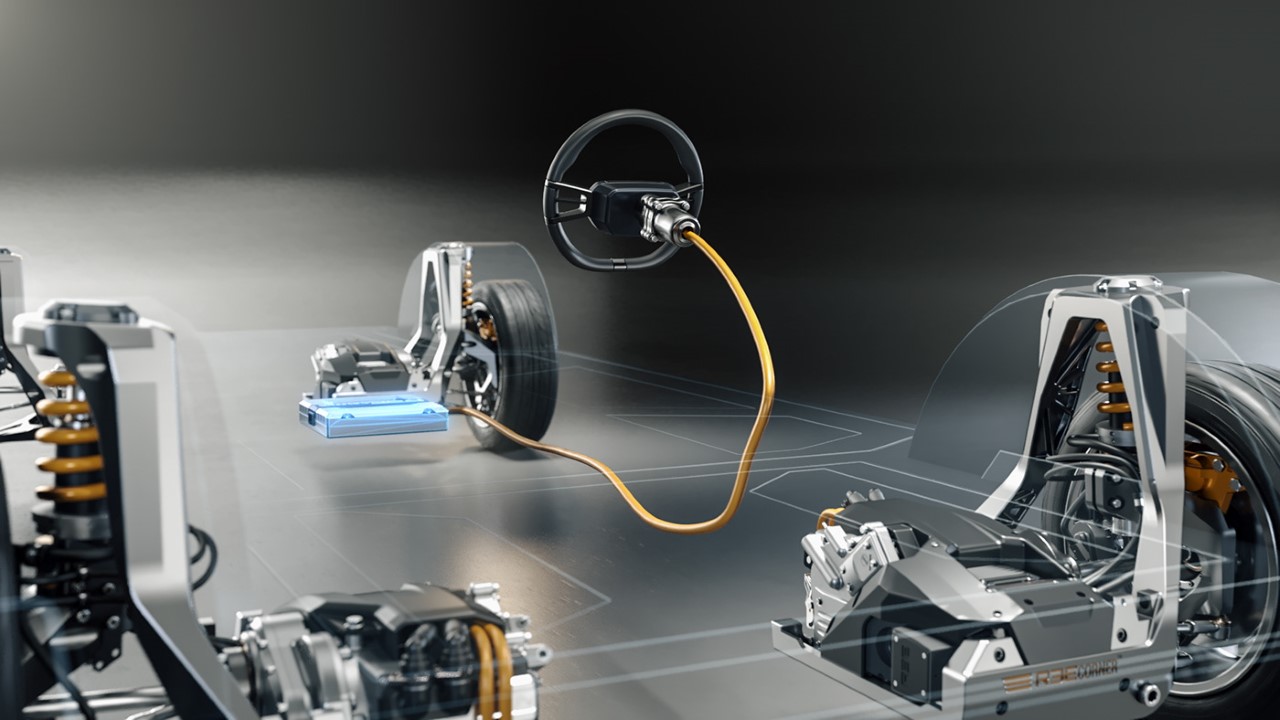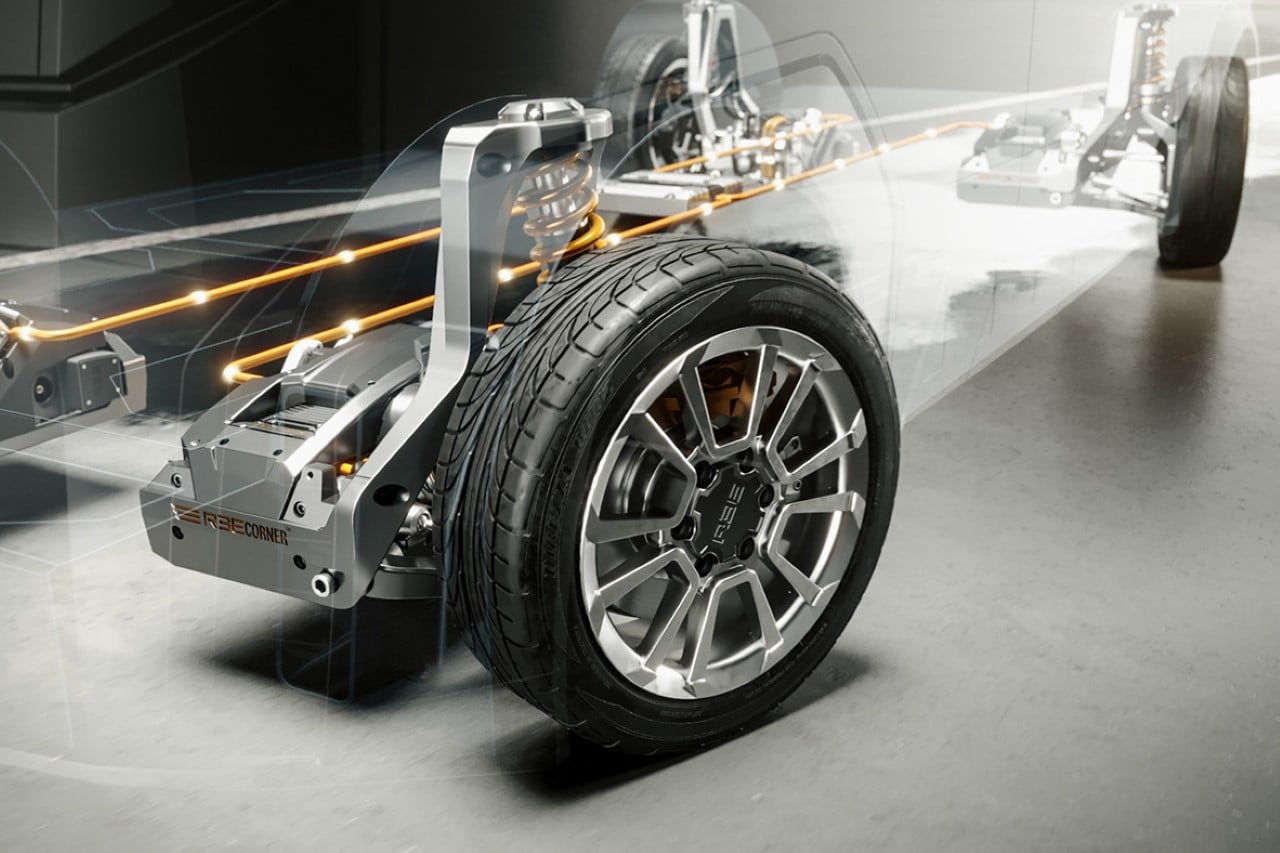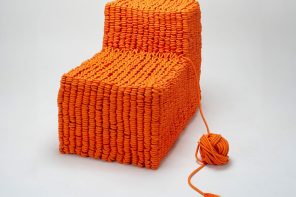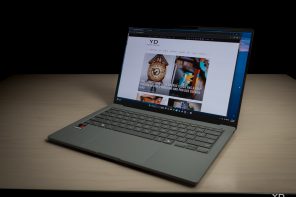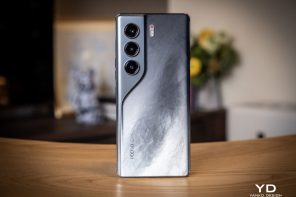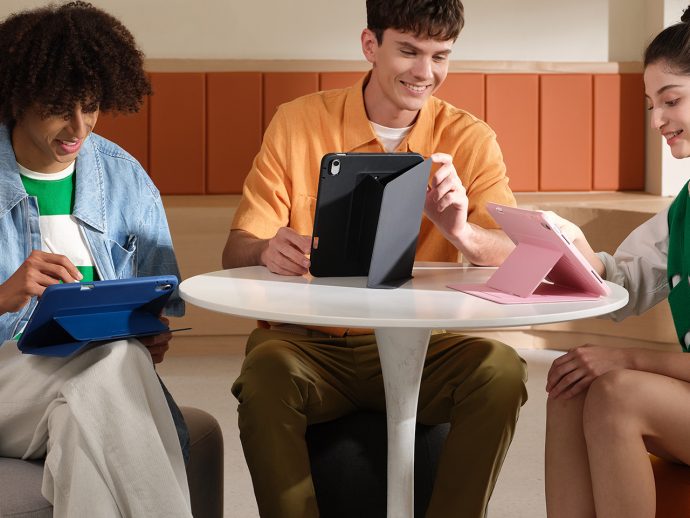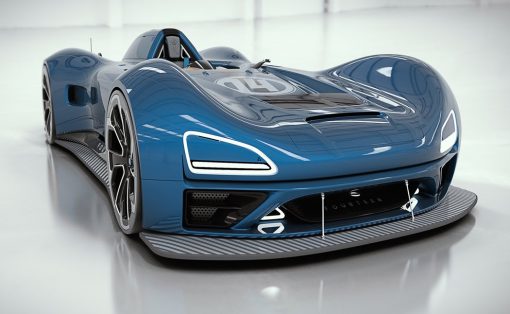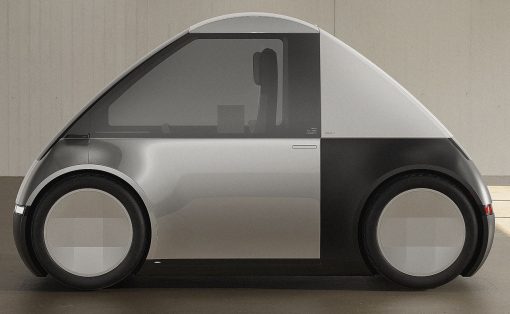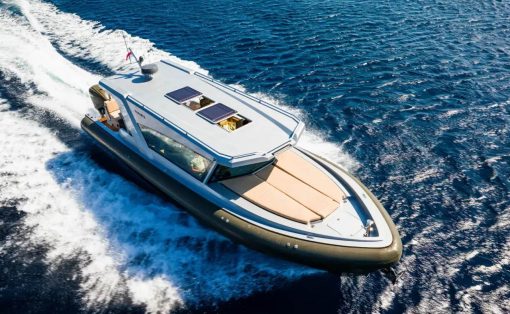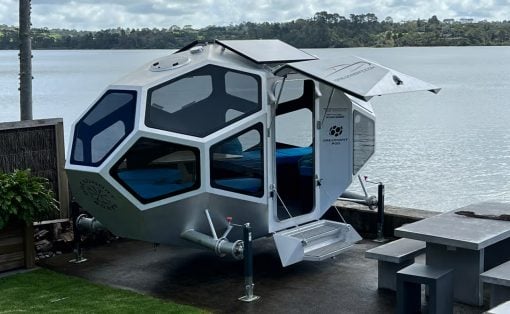Although a pretty large vehicle, the REE XBW has immense control, can navigate narrow areas and make sharp turns with ease, and can instantly parallel park without any effort. The secret? Its unique independent-wheel-drive build that allows all four wheels to operate independently, turning and rotating on their own to help the electric bus easily maneuver across a variety of challenging paths. Each wheel has its own motor, brake, and gearbox, and the REE XBW’s drive-by-wire, brake-by-wire, and steer-by-wire technology replace mechanical or hydraulic systems with electronic ones. This means you can design a bus with a steering wheel placed practically anywhere, giving it a sort of flexibility that other EVs don’t possess.
Designer: REE Automotive (Video directed and animated by bricktop)
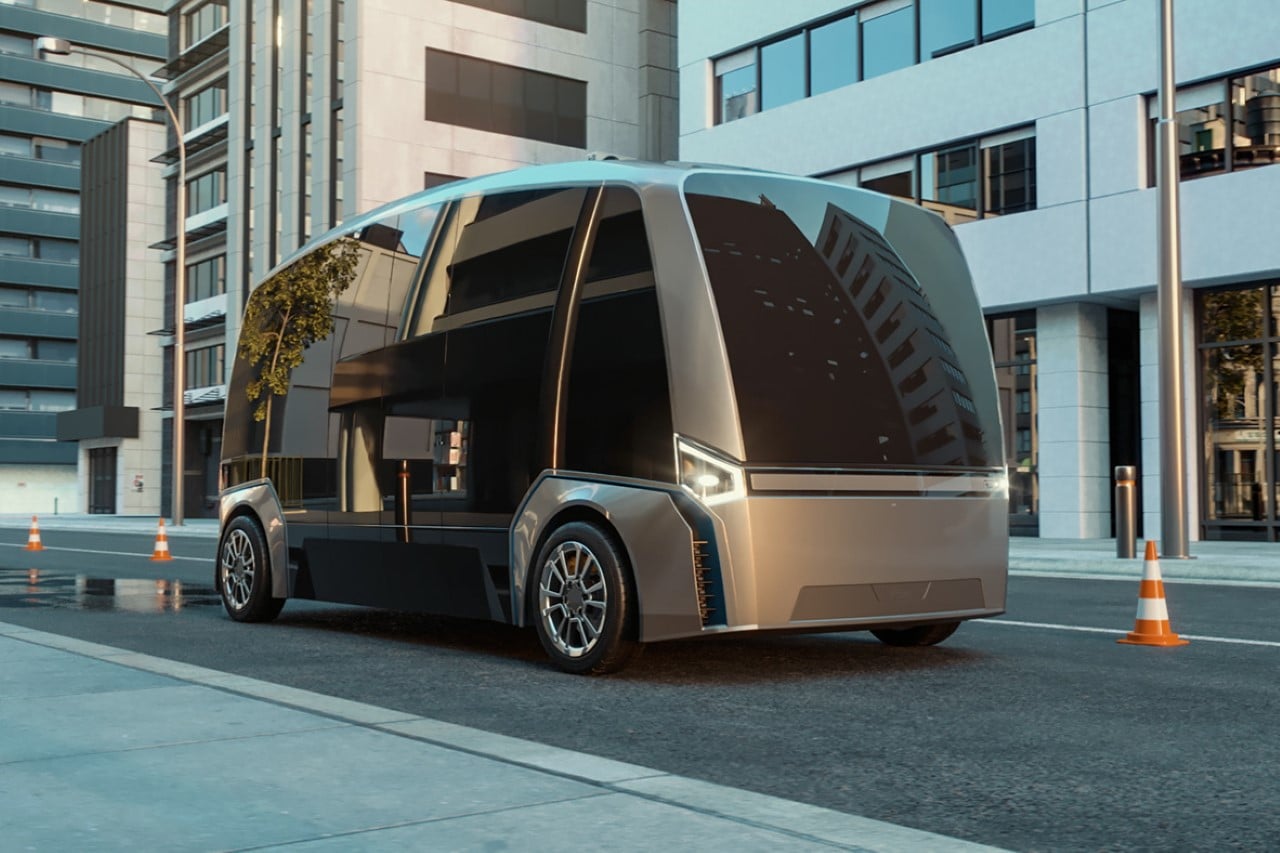
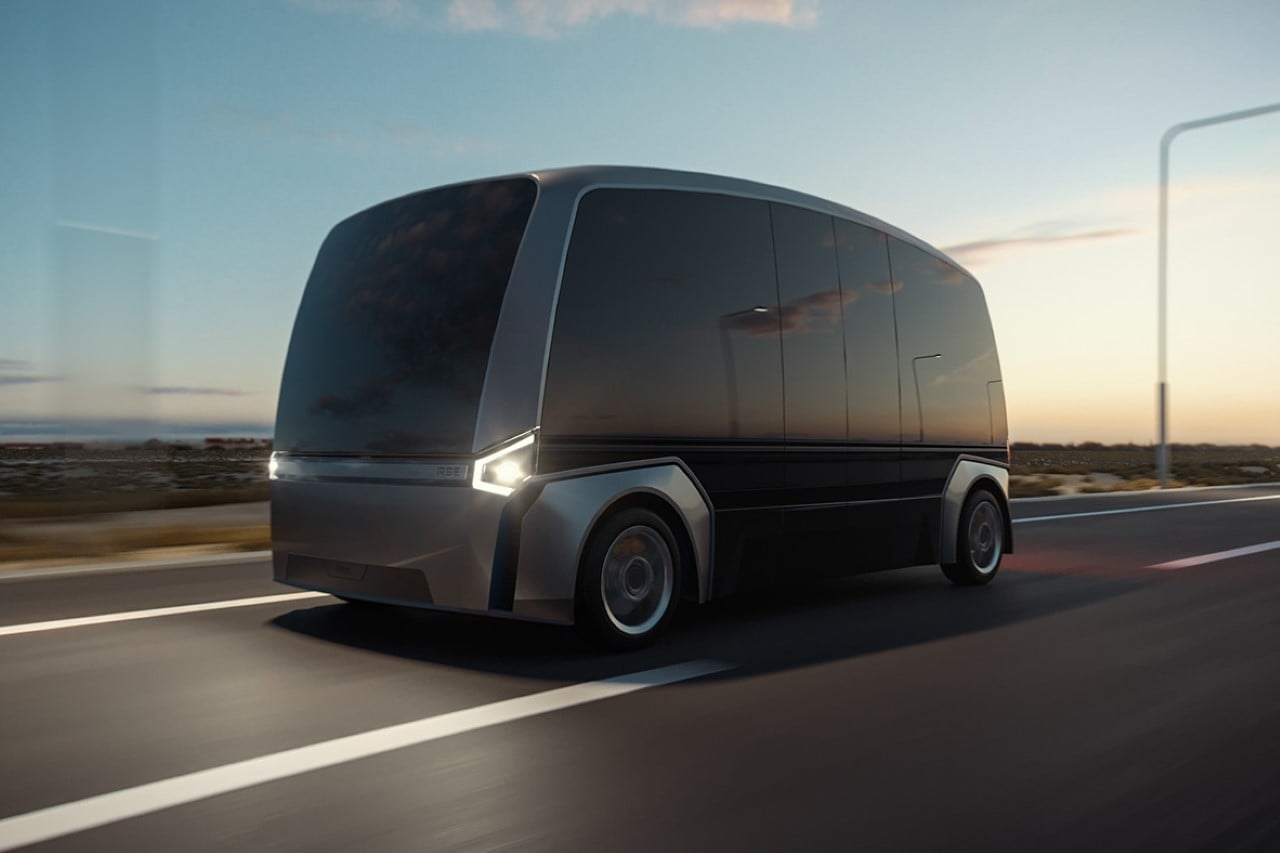
The bus itself has a slick design that oozes a sense of futurism, with an interplay of reflective glass and metallic surfaces, all combined in a mysterious monolithic black box on wheels. The bus’ design is a visual palindrome – it’s exactly the same on the front as well as the back, which means it can flip directions on command, traveling in reverse if needed. The bus’ drive-by-wire technology means the steering wheel can potentially be shifted from the front to the back too, helping it reverse orientation without doing a complete U-turn. Even if it did need to do a U-turn, the XBW has a ridiculously small turning radius, thanks to the fact that its wheels can independently face in any direction, helping the large vehicle make sharper, shorter turns at corners and around objects.
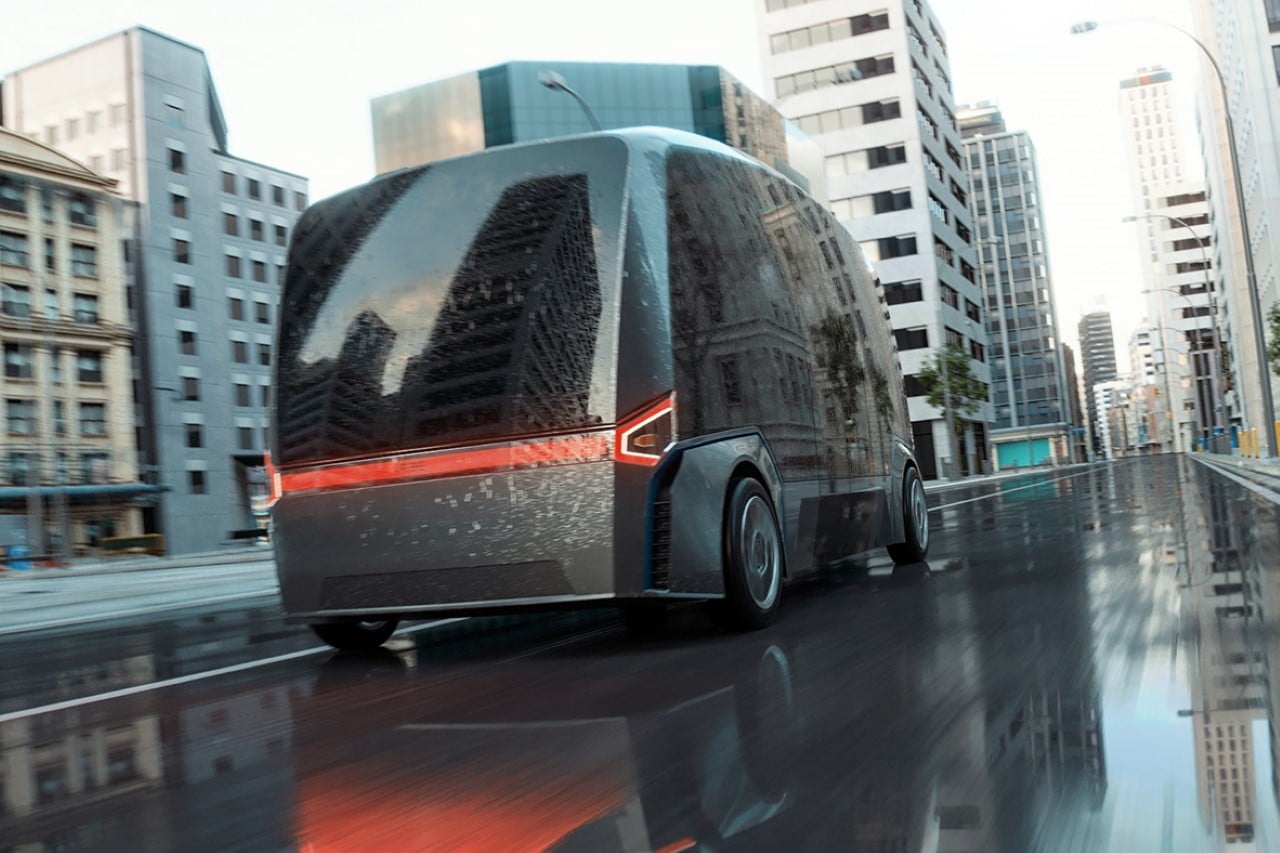
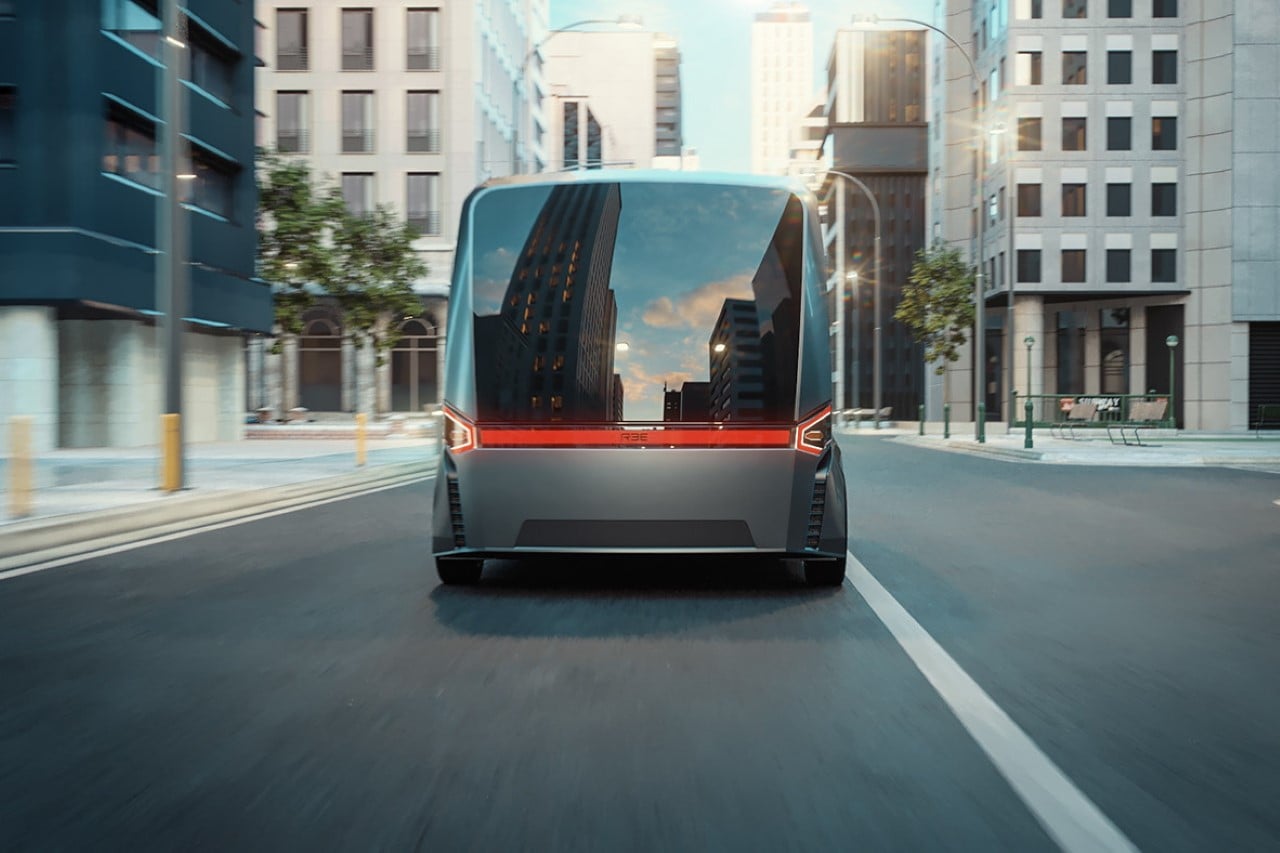
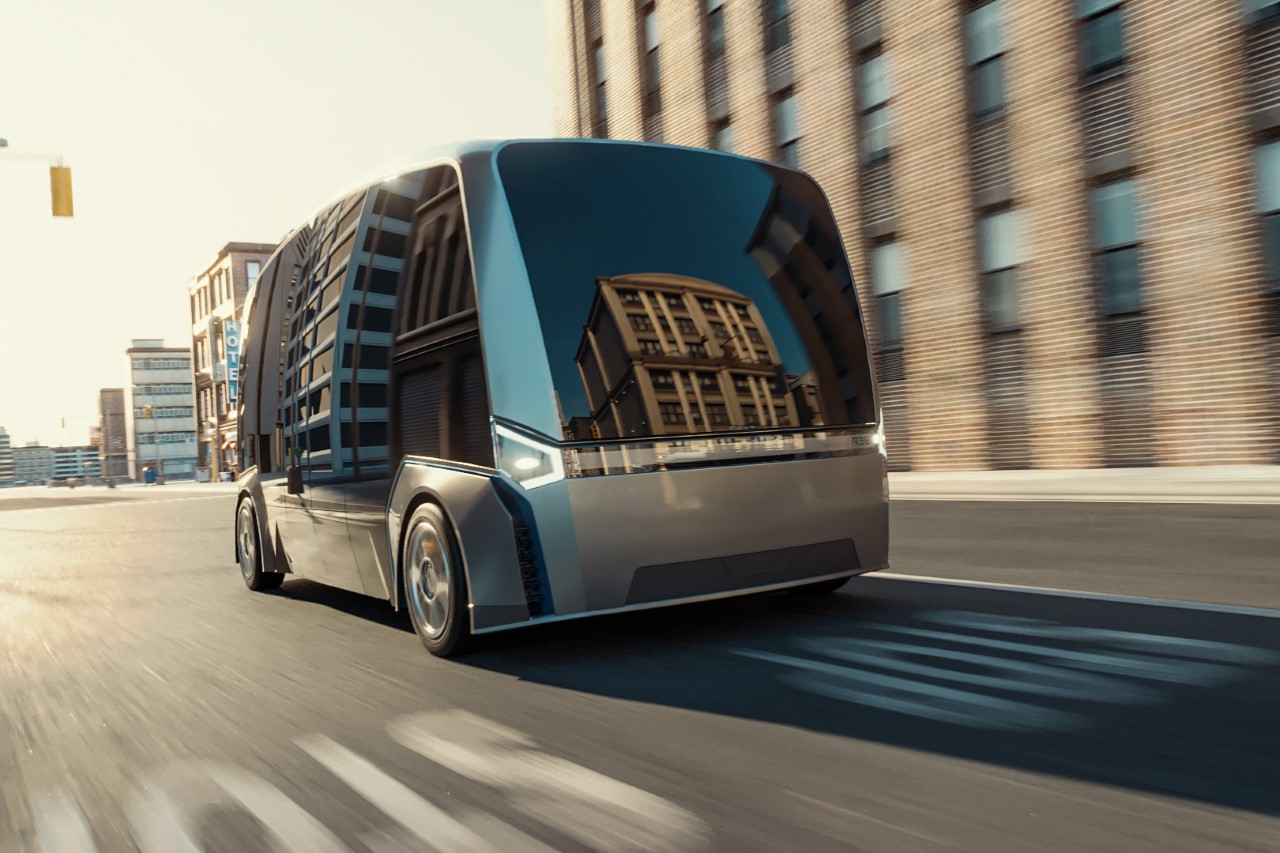
The REE XBW is currently just a conceptual vehicle, although its true purpose is to highlight REE Automotive’s REECORNER™ technology. The EV’s IWD and x-by-wire features give it unparalleled vehicular stability, responsiveness, and safety. This helps the XBW concept run flawlessly on roads, with the agility of a much smaller vehicle and the ability to overcome bad roads, tricky turns, and even slippery surfaces with relative ease.
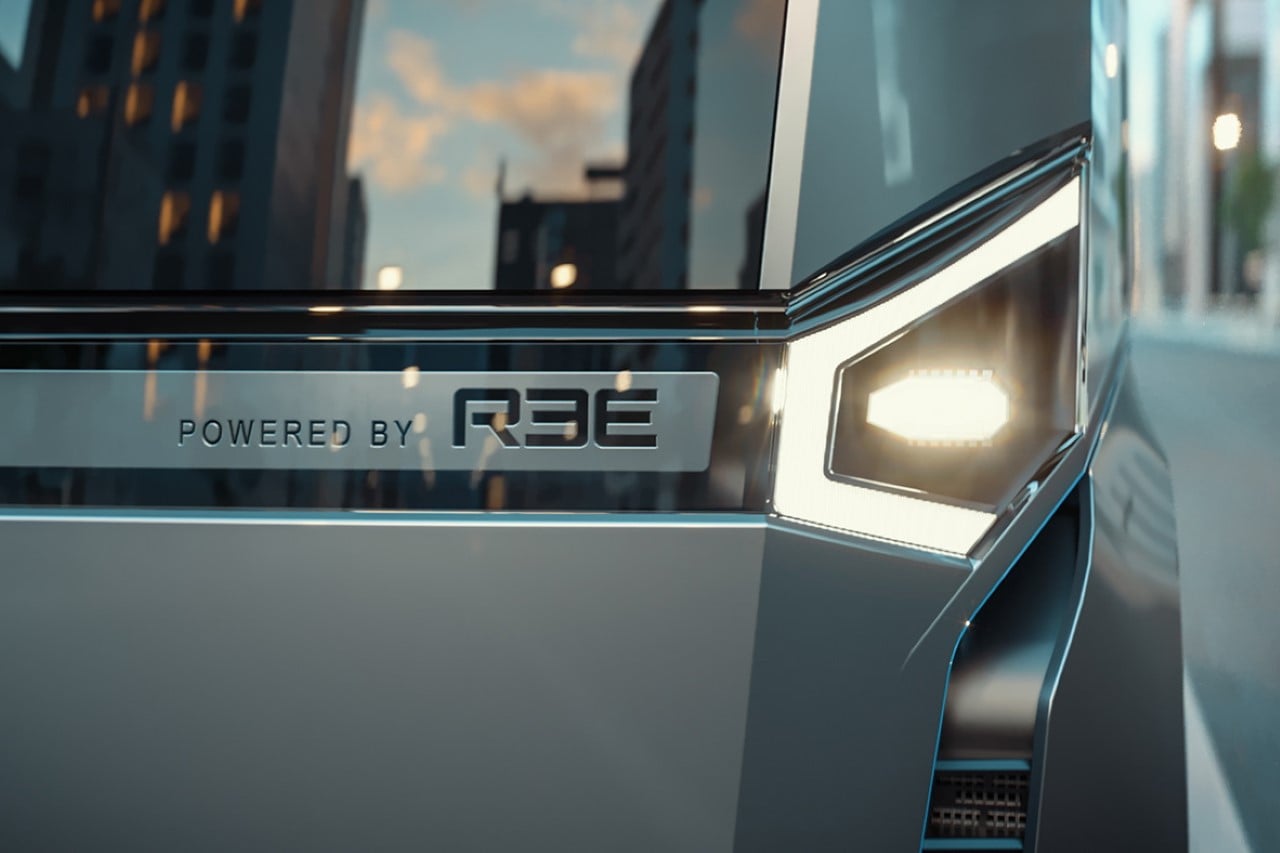
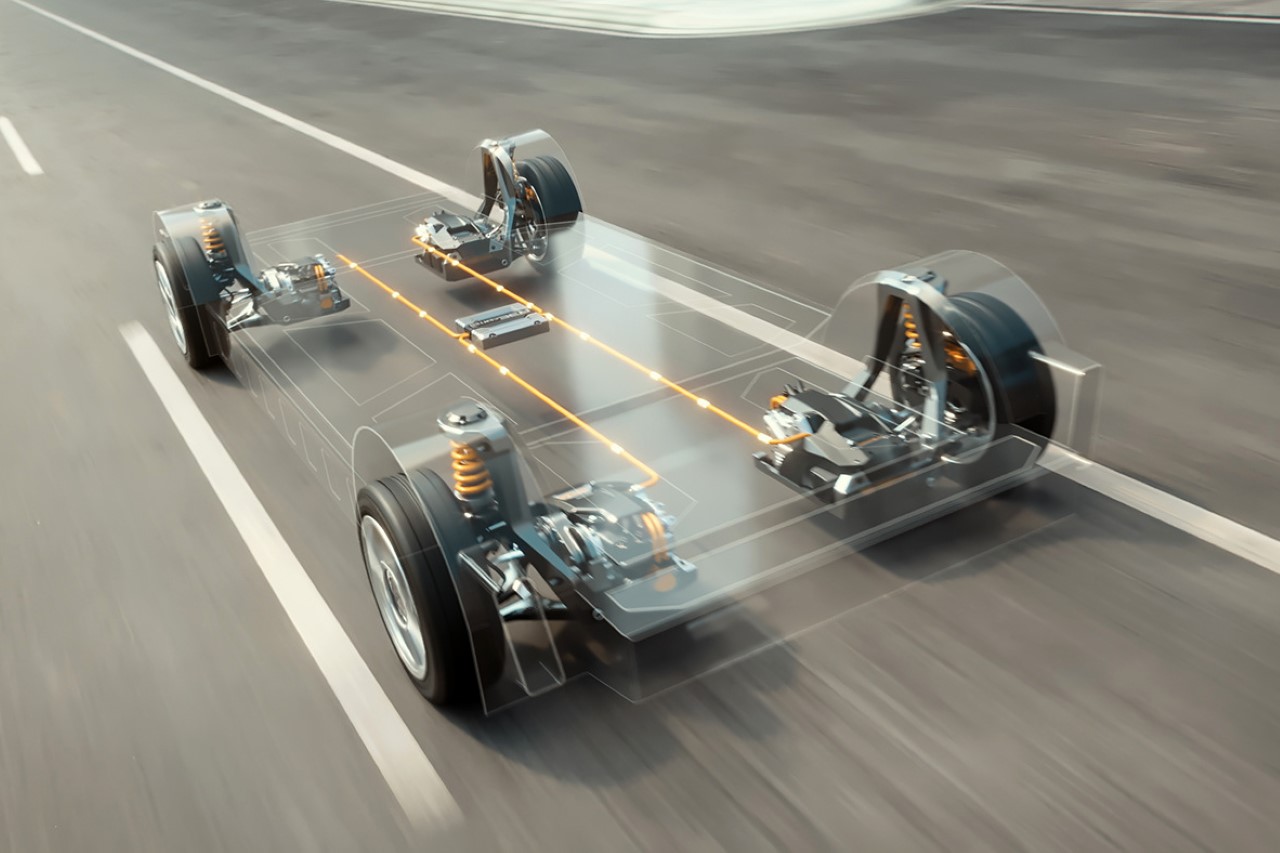
The independent wheel drive (IWD) system gives each wheel its own motor, gearbox, brake, and suspension.
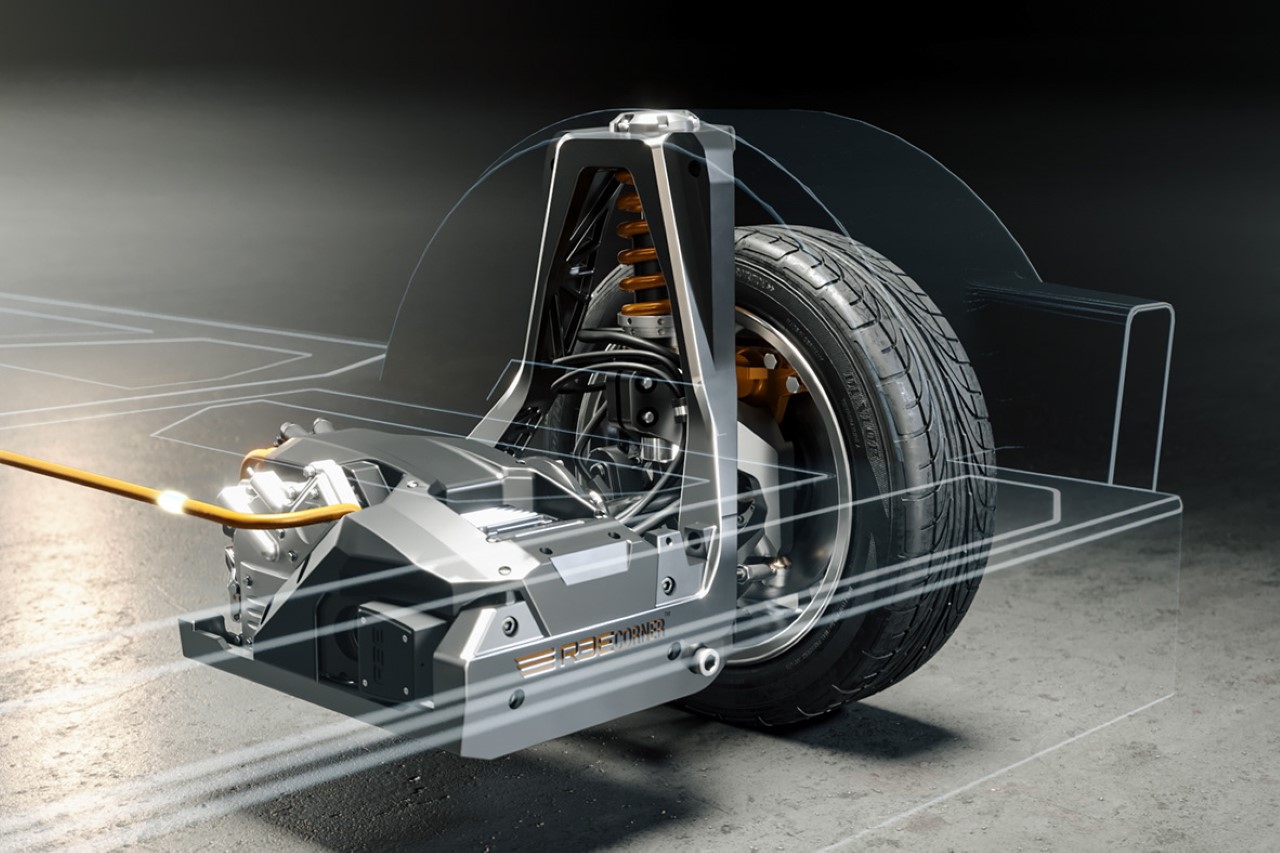
Since the wheels all operate independently without any axle or physical connections, there’s no need for them to be physically connected to the steering wheel either. The steering wheel, as a result, can be placed anywhere inside the EV, with its sensors delivering information to the wheels electronically rather than mechanically. This makes it easy to design, redesign, and modify the XBW’s interiors to switch it between left-hand and right-hand drives, or expand or contract the cockpit based on requirements.
